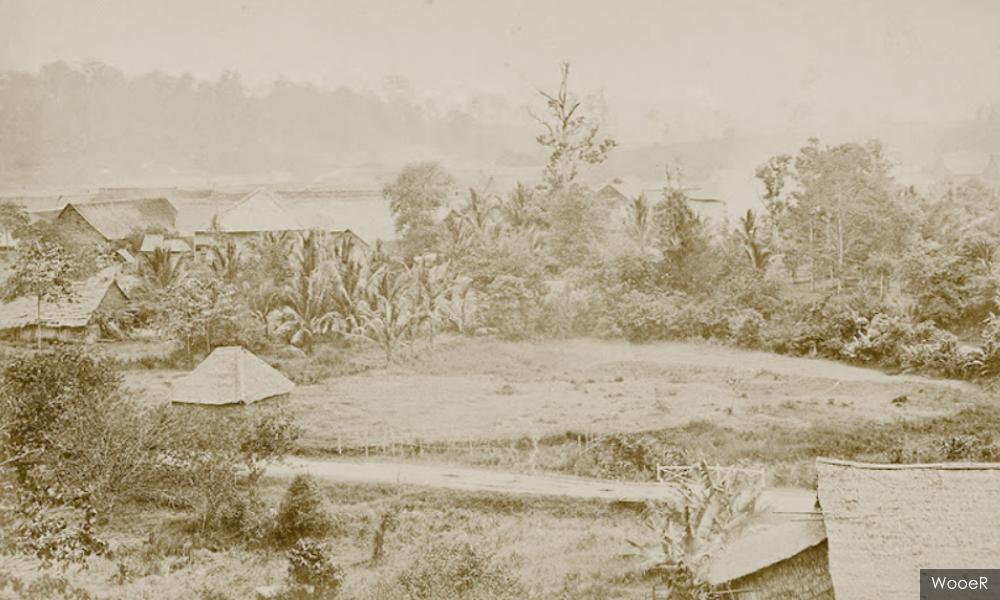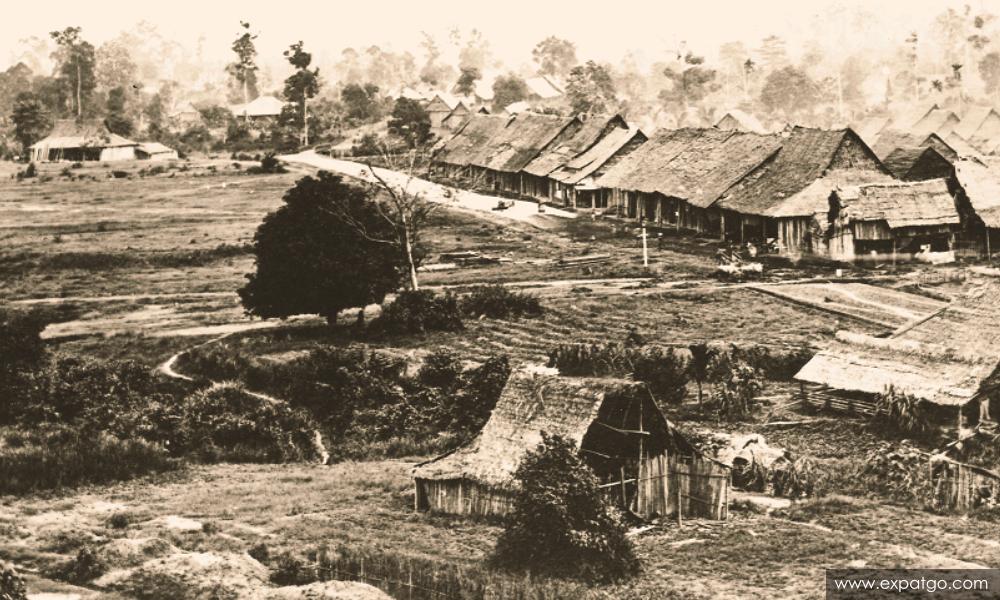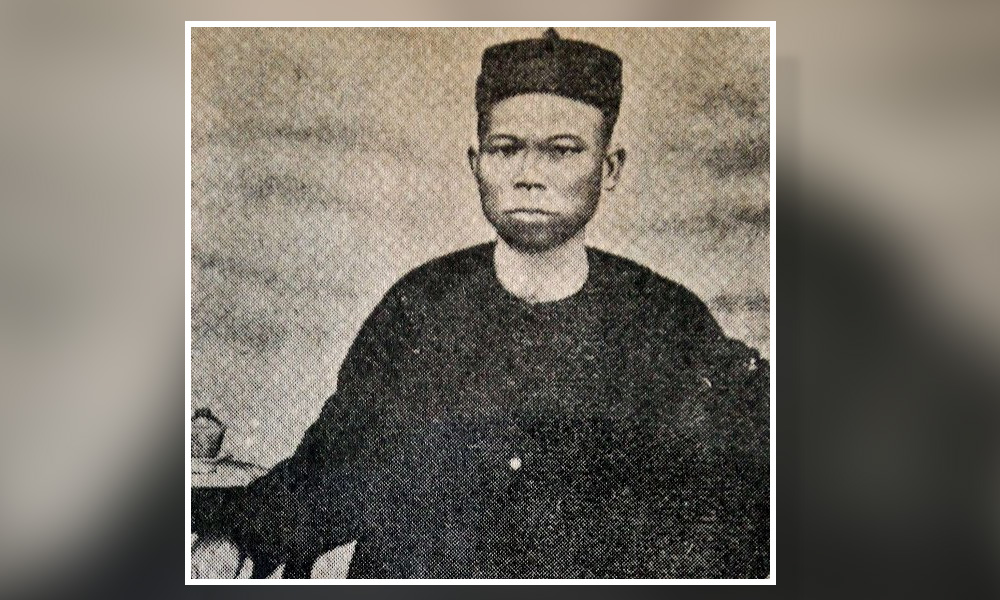Who's the real founder of Kuala Lumpur?
HISTORY: TOLD AS IT IS | There are three competing narratives among academics regarding the real founder of Kuala Lumpur, the capital city of Malaysia.
According to the first and widely popular narrative, Yap Ah Loy is the founder of Kuala Lumpur.
The second narrative - the “Mandailing narrative” - proposed by author Abdur-Razzaq Lubis is of the view that it is Sutan Puasa, a Mandailing nobleman, who is the real founder of Kuala Lumpur.
The third narrative, often termed as the “ethno-nationalist narrative” or “government-sanctioned history”, claims that Raja Abdullah Raja Jaafar is the founder of Kuala Lumpur by virtue of he having opened up tin mines in Ampang.
Adopting the “ethno-nationalist narrative”, Kuala Lumpur’s current official tourism website states that Kuala Lumpur was founded in 1857 by Raja Abdullah, the district chief of Klang. It claims that he came to Ampang together with 87 Chinese workers in search of tin ore. They “found tin near Ampang” and “That moment marked the beginning of KL’s development.”

Additionally, in the current Form 3 school history textbook (page 61), Raja Abdullah is listed first as being among four individuals who developed Kuala Lumpur (before Sutan Puasa, Abdullah Hukum and Yap Ah Loy).
Furthermore, Associate Professor Dr Zulkanain Abdul Rahman of the Universiti Malaya’s History Department makes an outlandish claim in a 2012 publication by the National Archives of Malaysia that Kuala Lumpur originated and developed as a Malay settlement before the arrival of the British.
To demystify these contesting claims, this article seeks to enlighten readers about the real founder of Kuala Lumpur based upon credible historical facts. To do so, one first needs to define clearly the term “founder”.
This word carries two meanings in historical scholarship. First, it refers to the “originator” or “establisher” of an organisation or settlement or as Sharon A Carstens describes it aptly, “the first important person on the scene.” The second meaning of the term “founder” is the “builder” or “prime mover” or in the words of Carstens, “the person who expended the most effort in early years to build and develop the city.”
Historical facts
Now, let’s look at the historical facts. In 1857, Raja Abdullah sent a party of 87 Chinese miners to open up tin mines at Ampang, in the interior of Selangor. Within a month of their arrival, 69 of them had died primarily due to malaria. Subsequently, more Chinese miners were sent and tin mining in Ampang flourished with tin first exported in 1859.
However, it should be noted that there is no historical evidence to prove that Raja Abdullah had accompanied these Chinese tin miners to Ampang. According to JM Gullick, a leading authority on the history of Kuala Lumpur, the Chinese tin miners during the first trip were accompanied by a “Malay agent of the district chief of Klang.”
Similarly, a 1959 publication by the Kuala Lumpur Municipal Council makes no mention of Raja Abdullah having accompanied the Chinese tin miners. Thus, the narrative that Raja Abdullah is the founder of Kuala Lumpur is unsupported by historical facts.
Next, let’s explore the origin of Kuala Lumpur. In 1859, at the behest of Sutan Puasa who bought trade supplies from them, Hiu Siew and his business partner, Ah Sze, left Lukut (currently a suburb of Port Dickson, Negeri Sembilan) and settled at a place near the confluence of the Klang and Gombak rivers (around formerly Old Market Square and now Medan Pasar). They cleared the jungle, built a few huts, and established a trading post selling provisions to the mines inland.
This settlement gradually grew into a market town where tin was traded and transported to Klang for the international market. Hiu Siew, with the assistance of Sutan Puasa, obtained recognition as the first Kapitan Cina or Chinese headman of Kuala Lumpur from Raja Abdullah.

As stated by SM Middlebrook, a British civil servant, this settlement became known as Kuala Lumpur. Indeed, Gullick asserts that this trading post marks “the origin of Kuala Lumpur itself.”
Interestingly, the Kuala Lumpur Municipal Council celebrated the town’s (now city) 100th anniversary in June 1959, which was even reported in The New York Times: “MALAYA CAPITAL HAILS 100TH YEAR; Kuala Lumpur Is Celebrating Its Founding as Village to Serve Tin Mines.”
Furthermore and importantly, Frank Swettenham (British colonial administrator who became the Resident of Selangor in 1882) tells us that Kuala Lumpur in 1872 was a “purely Chinese village, consisting of two rows of adobe-built dwellings, thatched with palm leaves.” The American zoologist, William Hornaday, who visited Kuala Lumpur in 1878 wrote that the “principal streets are lined with Chinese shops.”
According to Gullick, Kuala Lumpur town in 1880 had about 220 houses of which 70 were in the Malay Quarter. For the record, as stated by Barbara Andaya and Leonard Andaya, 79 percent of Kuala Lumpur’s population in 1891 was Chinese. Perhaps, Margaret Shennan, an expert on British Malaya, sums it up best as follows: “Kuala Lumpur was another town created by the enterprise of the Chinese.”
Third Kapitan Cina
With regard to Yap Ah Loy, he became the third Kapitan Cina of Kuala Lumpur after the death of Liu Ngim Kong, the second Kapitan Cina of Kuala Lumpur in 1868. Yap Ah Loy was subsequently officially installed by Raja Mahdi (the new Malay district chief of Klang) and given a seal of office and the Malay title, “Seri Indra Perkasa Wijaya Bakti” by Sultan Abdul Samad of Selangor.
Yap Ah Loy was primarily responsible for rebuilding Kuala Lumpur after it was largely destroyed during the Selangor Civil War (1866-1873). He persuaded the Chinese to start their business again from scratch; virtually kept Kuala Lumpur free of crime; built cart-roads to the mines in the vicinity; and imported over 4,000 Chinese labourers to work in his mines and other enterprises.
He also assisted greatly in rebuilding Kuala Lumpur after it was first destroyed by fire in January 1881 and later by flood in December of the same year. According to Swettenham, it was Yap Ah Loy’s “perseverance alone” that “has kept the Chinese in the country.”
Hence, history bears ample testimony that Yap Ah Loy was undoubtedly the “Builder of Kuala Lumpur”. In the words of Gullick, “Down to 1879, Yap Ah Loy was Mr Kuala Lumpur.” He adds further that Yap Ah Loy raised Kuala Lumpur “from an obscure mining village to become the most important town in the Malay Peninsula.” Similarly, a renowned textbook writer of the 1960s, J Kennedy, states that Yap Ah Loy has done “more than anyone to establish the little township destined to become Malaya’s capital.”

Pertaining to Sutan Puasa, he was neither an “originator” nor a “prime mover” in the origins and development of Kuala Lumpur. Sutan Puasa lived near the tin mining settlement of Ampang whereas Kuala Lumpur grew from the original trading post established by Hiu Siew and his business partner, Ah Sze - a fact clearly ascertained by both Middlebrook and Gullick. In terms of developing Kuala Lumpur, Sutan Puasa (a tin trader and merchant) pales in comparison with Yap Ah Loy who in the words of Gullick was a “leader in war, an administrator and a mining magnate.”
Hence, while Sutan Puasa was a prominent and influential Mandailing leader based in Ampang, he was not the prime mover behind the core city’s founding and subsequent development, particularly when compared to the enormous leadership and legacy left behind by his contemporary, Yap Ah Loy.
To conclude, if the term “founder” refers to “the originator of a settlement”, the founder of Kuala Lumpur is arguably Hiu Siew. If the term “founder” refers to “the early builder of a settlement”, then the founder of Kuala Lumpur is undoubtedly Yap Ah Loy.
In contrast, the “Mandailing narrative” falls short as Sutan Puasa resided close to the Ampang tin mining area which then formed the outskirts of Kuala Lumpur, which originated from a Chinese settlement at the confluence of the Klang and Gombak rivers. Similarly, the “ethno-nationalist narrative” has insufficient merit as there is no evidence of Raja Abdullah having accompanied the 87 Chinese tin miners to Ampang, which in any case, is not the original site of modern Kuala Lumpur.
I rest my case. - Mkini
RANJIT SINGH MALHI is an independent historian who has written 19 books on Malaysian, Asian and world history. He is highly committed to writing an inclusive and truthful history of Malaysia based upon authoritative sources.
The above article is a slightly amended version of an article entitled ‘Demystifying the founder of Kuala Lumpur’ which was published recently in Architecture Malaysia magazine, vol 33, 2021.
The views expressed here are those of the author/contributor and do not necessarily represent the views of MMKtT.
✍ Credit given to the original owner of this post : ☕ Malaysians Must Know the TRUTH
🌐 Hit This Link To Find Out More On Their Articles...🏄🏻♀️ Enjoy Surfing!




















Post a Comment